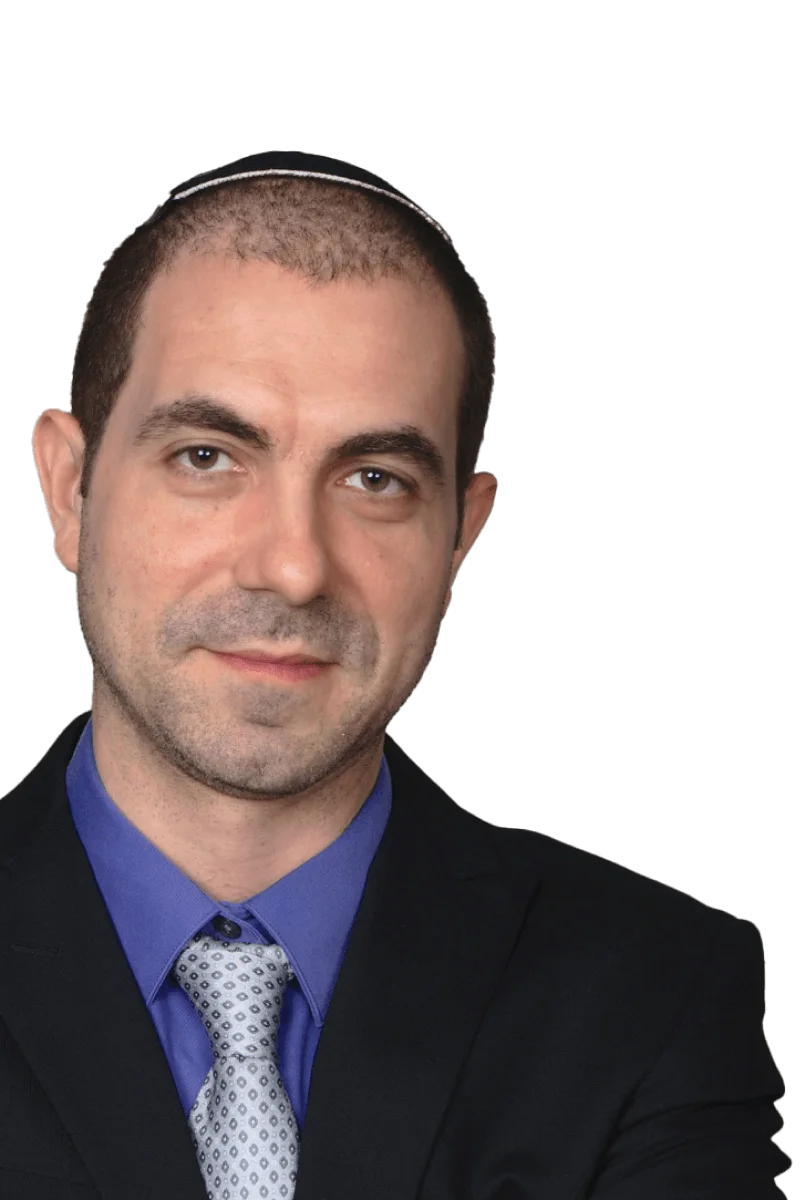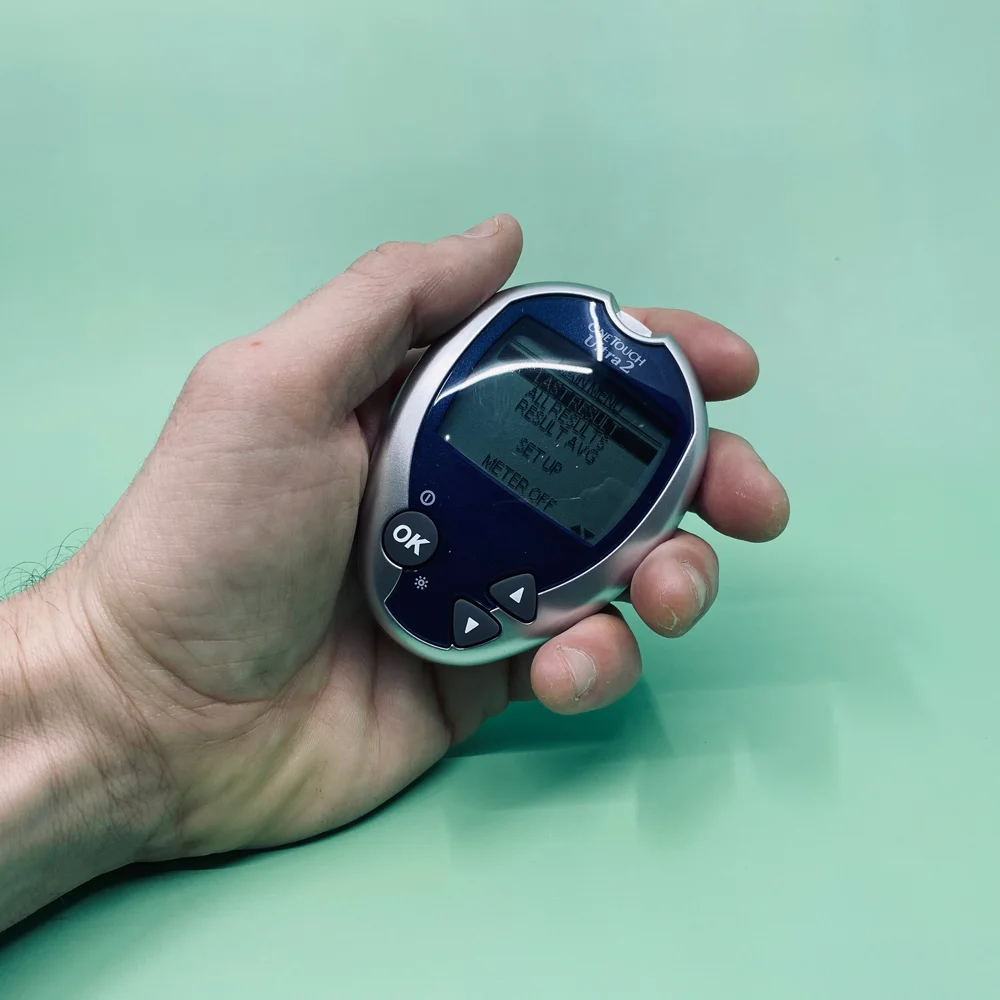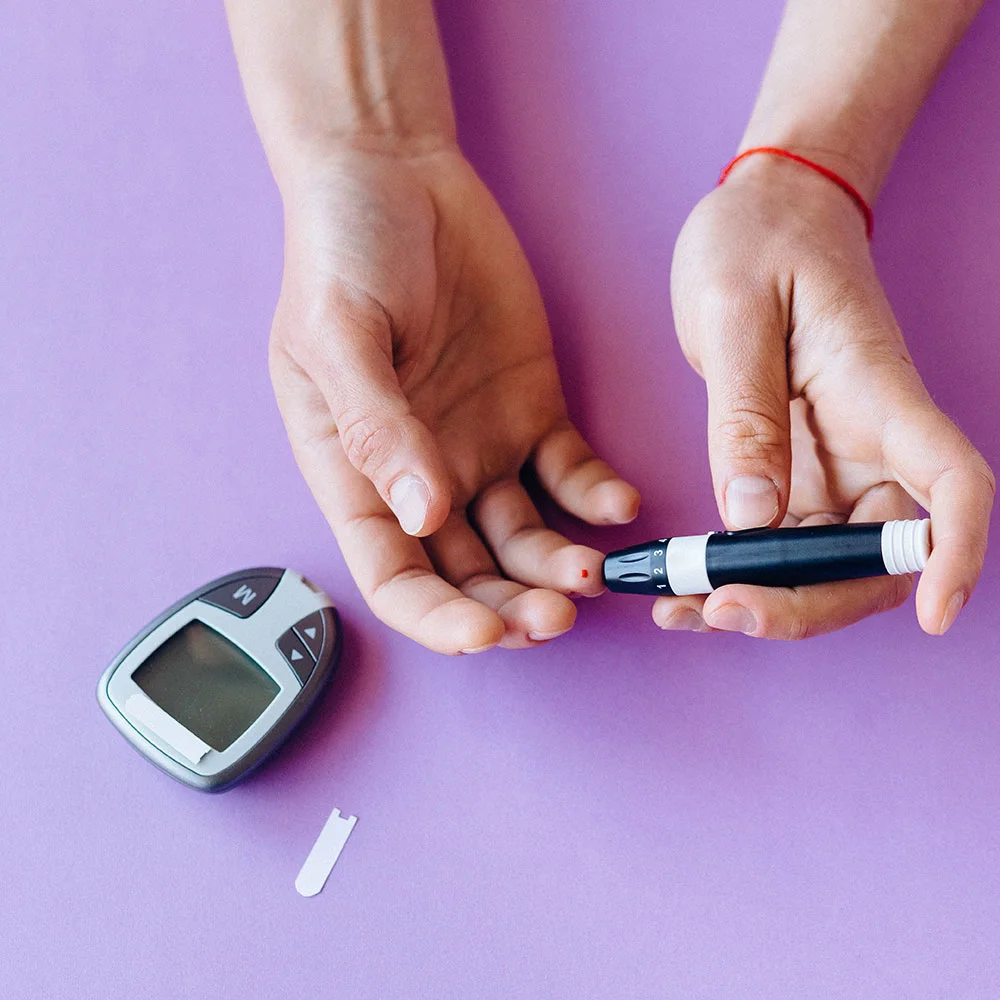Here's what we'll cover
Here's what we'll cover
Sometimes abbreviated as T1DM — as it will be here — type 1 diabetes mellitus is a disease where the pancreas stops making insulin or only makes very little insulin. T1DM used to be called juvenile-onset diabetes because it's usually diagnosed in children and adolescents. People of all ages can have new-onset T1DM, however.
Here are some numbers:
1 in 20 people with diabetes have T1DM
1 in 4 of all new T1DM diagnoses are made in adults
2 in 3 diagnoses of diabetes made under the age of 20 in the United States are T1DM
By contrast, type 2 diabetes mellitus (T2DM) is a disease where the pancreas continues to make insulin normally (at least, at first) but the body does not respond to insulin as well. Here's what T1DM and T2DM have in common: they are both diseases where there is a problem with insulin in the body. Clinically, the two conditions look similar and have many of the same symptoms and long-term effects. It's the underlying causes, risk factors, and some of the treatments that differentiate them.
T1DM and T2DM should not be confused with diabetes insipidus. Diabetes insipidus is a rare disease that causes extreme thirst and frequent urination as a result of the body's inability to regulate fluid. It is not related to insulin. The term "diabetes" means "siphon" in Greek, a reference to how much people with diabetes urinate, which is a lot. That's why is why both diabetes mellitus and diabetes insipidus share this name.
What is the pancreas? What is insulin?
The pancreas is an organ that sits behind the stomach. It has two main functions: it secretes enzymes into the intestines to help with digestion, and it secretes hormones into the bloodstream to help regulate blood sugar levels. Another name for the sugar in your blood is glucose. One of the blood-sugar controlling hormones the pancreas secretes is called insulin, which comes from specialized cells called beta cells.
Let's look at how insulin is supposed to work in the body.
When you ingest food, the following steps occur:
The carbohydrates in your food are broken down in the digestive system into sugars. Carbohydrates are one of the main nutrients in food, along with fats and proteins.
These sugars are absorbed from your intestines into your bloodstream, raising your blood sugar levels.
The rise in blood sugar levels stimulates the release of insulin from pancreatic beta cells into the bloodstream.
As insulin flows around the body, it has two main actions that work together to maintain blood glucose levels within a specific range (typically between 70-99mg/dL when not eating):
Insulin binds to receptors on fat and muscle cells, helping glucose enter the cells and providing them with energy
Insulin acts on receptors in the liver, prompting the liver to store extra glucose in the form of a molecule called glycogen.
In T1DM, this process breaks down. T1DM is an autoimmune disease, meaning it is a disease where the body's immune system attacks itself. For reasons that are not entirely clear, the immune system begins attacking the beta cells of the pancreas in some people. This autoimmune response makes it, so the cells have a difficult time producing insulin or so that they stop producing insulin altogether. Here's what this break down means for someone with T1DM in real terms:
There is low to no insulin flowing in the bloodstream
Blood sugar levels are uncontrolled
Fat and muscle cells cannot get the energy they need from glucose
The liver doesn't effectively store glucose as glycogen
These effects are hazardous and can rapidly become life-threatening. In fact, before the development of insulin treatment in the 1920s, T1DM was always fatal. However, it can now be managed with insulin that is given either through injections or with an insulin pump. Insulin is required for the treatment of T1DM. However, it is not necessarily needed to treat T2DM.
What is the prevalence of type 1 diabetes?
According to one study, the incidence of T1DM amongst non-Hispanic white youth under the age of 19 in the United States is approximately 2 per 1,000 (Maahs, 2010). Rates of T1DM for other races and ethnicities in the United States are even lower. Globally, there is tremendous variation in the incidence of new cases in children (0.1-1.9 per 100,000 in China and Venezuela compared to 37-65 per 100,000 in Finland and Sardinia). There's even a variation based on geographic latitude within particular countries (Levitsky, 2019). These differences tell us that environmental factors may play a substantial role in the development of T1DM.
As we discussed earlier, both children and adults can be diagnosed with T1DM. However, the most common ages of diagnosis are 4-6 years old and 10-14 years old.
What are the causes of type 1 diabetes?
T1DM is an autoimmune disease, meaning it is a disease where the body attacks itself. Specifically, the immune system creates antibodies which attack insulin-producing beta cells. These cells reside in the pancreas in small groups called islets of Langerhans, and once they are damaged, they stop producing insulin. Exactly why this happens is still unclear to medical professionals. While genetics are important, some believe that environmental factors, such as exposure to certain viruses, may also cause T1DM.
What are the risk factors for developing type 1 diabetes?
Genetics appears to play a role in T1DM, but it is not the only factor. For example, in identical twins, one person may have T1DM while the other does not. However, there is a 30% chance of the second twin developing T1DM within ten years of the first and a 65% chance of developing T1DM by age 60. This incidence is significantly higher than the 0.4% chance of developing T1DM if you do not have any family history of the disease. This data tells us that there must be some genetic susceptibility to developing T1DM. Additional risk factors include age, exposure to viruses, geography, and lifestyle, but the role each of these may play in T1DM is not well understood.
Is there any way to prevent type 1 diabetes?
Unfortunately, there is currently no way to prevent T1DM. If you know that you are at higher risk of developing the disease (e.g., you have a family history of T1DM), it's crucial to keep an eye out for symptoms. Talk to your healthcare provider the moment you think there may be a problem.
Instead of prevention, management of T1DM is focused on the treatment of the condition once you're diagnosed.
What are the symptoms of type 1 diabetes?
The symptoms of T1DM can appear rapidly. This means that people may present to their healthcare provider fairly quickly after the onset of symptoms. Classic symptoms include:
Increased thirst (polydipsia)
Frequent urination (polyuria)
Extreme hunger (polyphagia)
Lack of energy
Weight loss
These symptoms are related to the fact that insulin is not circulating in the blood and is not helping glucose enter cells. The excess glucose in the blood spills into the urine, bringing extra water with it (meaning more frequent trips to the bathroom) and causing dehydration (leading to increased thirst). The body is also unable to get the energy it needs, leading to a lack of energy and weight loss.
Approximately 30% of patients, particularly younger children or those from disadvantaged backgrounds, present with more severe symptoms. These include:
Fruity breath
Drowsiness
Lethargy
Abdominal pain
Vomiting
These symptoms are caused by a buildup of acid and ketones in the blood. When the body is unable to use glucose for energy, it starts breaking down fat at a high rate. This breakdown of fat creates molecules called ketones as a byproduct. When these ketones build up and cause symptoms, it is known as diabetic ketoacidosis (DKA), which is a life-threatening condition requiring hospitalization for treatment.
What are the complications of type 1 diabetes?
Patients with T1DM are at risk of developing DKA at any time in their lives if they do not stick to their diet and insulin regimen. Long-term complications of DKA include:
Nerve damage (neuropathy)
Kidney damage (nephropathy)
Eye damage (retinopathy)
Complications with pregnancy
Increased risk of heart and blood vessel disease (heart attack and stroke)
Increased risk of infection
Many of these complications are a direct result of excess blood sugar in the bloodstream, which damages the small blood vessels and leads to reduced blood flow. When infections or reduced blood flow are severe enough, amputations of the extremities may be necessary.
How is type 1 diabetes diagnosed?
Diabetes can be diagnosed by one of several blood tests that check blood sugar levels. These include:
A blood glucose level > 126 mg/dL after you have fasted for 8 hours. This level needs to be confirmed more than once. The test is called the fasting plasma glucose test (FPG test).
A blood glucose level > 200 mg/dL taken randomly, in combination with symptoms. The test is called the random plasma glucose test (FPG test).
A blood glucose level > 200 mg/dL during an oral glucose tolerance test (OGTT), which involves administering a measured dose of glucose by mouth
A hemoglobin A1C level > 6.5, which is a blood test that gives a reasonable estimate of how well blood sugar levels have been controlled over the prior three months
Once a diagnosis of diabetes is made, your healthcare provider may do additional blood tests to confirm that it is T1DM. These blood tests look for specific antibodies, including GAD-65, IA-2, IAA, ICA, and ZnT8. However, it is possible to have T1DM without any of these antibodies, and it is also possible to have T2DM with some of these antibodies. If you have signs of T1DM with antibodies, you are said to have type 1A diabetes. If you have symptoms of T1DM without antibodies, you are said to have type 1B diabetes.
What is the treatment for type 1 diabetes? Is there a cure?
There currently is no cure for T1DM. Initial management of T1DM depends on the symptoms someone has. If a patient comes to the emergency room with DKA, they are first stabilized in intensive care or other hospital settings.
T1DM can otherwise be managed at home. The mainstay of treatment for T1DM is insulin therapy and maintaining control of blood glucose levels. Once diagnosed, everybody with T1DM should be educated about the disease, the importance of continued glucose monitoring, and the potential long-term effects.
Because the pancreas no longer effectively produces insulin, insulin needs to be given to T1DM patients exogenously. Exogenous means from outside. People with T1DM need insulin produced from outside of their body.
Several different types of insulin have now been developed that are classified based on how long they last in the body and how quickly they start to work. Insulin can be given via injections, through an insulin pump, or with an artificial pancreas (CDRH, 2018). Each person with T1DM should carefully monitor his or her blood sugar to make sure the appropriate types and amounts of insulin are being used.
While it is important for blood sugar levels not to go too high (a condition called hyperglycemia), it's perhaps even more important to make sure blood sugar levels do not go too low (a condition called hypoglycemia). As you can see, the management of T1DM boils down to finding a balance between these two extremes. How well controlled an individual is can be determined by monitoring his or her hemoglobin A1C. For children and adolescents, a hemoglobin A1C <7.5 is the goal; for adults, a hemoglobin A1C <7.0 is the goal.
Insulin is not the only thing affecting blood sugar levels. T1DM patients need to be aware of the foods they are eating, particularly sugars and carbohydrates (which break down into sugars in the body). Each person with T1DM should have a plan for what they eat and when. Exercise can similarly impact insulin needs, and people who exercise more may not require as much.
What is hypoglycemia?
Hypoglycemia is a term for low blood sugar, and it occurs when blood glucose levels fall below 70 mg/dL. While hypoglycemia typically occurs in the context of diabetes, it is also possible for people without diabetes to get hypoglycemia too.
In T1DM, the most common cause of hypoglycemia is insulin administration. Insulin causes blood sugar levels to go down, and how much insulin somebody gets is typically balanced against what his or her blood sugar levels are. However, if too much insulin is given compared to the blood sugar levels, the person can become hypoglycemic. This imbalance may happen if the person has not eaten enough, has been exercising more than usual, is sick, or has been drinking too much alcohol.
The symptoms of hypoglycemia include anxiety, dizziness, fatigue, headache, irregular heartbeat, shakiness, and sweating. However, hypoglycemia can be very dangerous and may progress to changes in vision, confusion, seizures, loss of consciousness, and even death. It is important to recognize hypoglycemia as quickly as possible and to act on it.
To prevent hypoglycemia, people with T1DM should keep a sugary snack on hand at all times, such as a fruit juice. Treatment of mild hypoglycemia includes having a sugary beverage or snack or taking sugar tablets. Hypoglycemia that is severe or unresponsive to treatment requires immediate medical attention.
What is hyperglycemia?
Hyperglycemia is a term for high blood sugar. While persistent hyperglycemia has many long-term effects, hyperglycemia doesn't usually produce obvious symptoms unless blood sugar levels are higher than 180 mg/dL. When this happens, symptoms may include headache, fatigue, frequent urination, thirst, and vision changes.
In T1DM, hyperglycemia may result from eating too many sugars/carbohydrates or not getting enough insulin. Adjusting insulin doses and diet strategy may prevent future episodes of hyperglycemia. Hyperglycemia in T1DM may also precipitate DKA, which is a medical emergency requiring hospitalization.
What else should I know?
Because diabetes is a risk factor for many other diseases (particularly heart disease), people with T1DM need to stay involved in the healthcare system. People with diabetes typically require annual screening to assess eye function, kidney function, and sensation in the feet. Also, when it comes to the prevention of cardiovascular disease and the treatment of high blood pressure and high cholesterol, people with diabetes have different recommendations and may require different medications or doses than people without T1DM.
T1DM can also cause issues in pregnancy. If you have T1DM, you should discuss your options with a healthcare provider before becoming pregnant.
The future of T1DM treatment may include pancreas transplant or stem cell therapy. Research is underway, but these treatments are currently not mainstream.
DISCLAIMER
If you have any medical questions or concerns, please talk to your healthcare provider. The articles on Health Guide are underpinned by peer-reviewed research and information drawn from medical societies and governmental agencies. However, they are not a substitute for professional medical advice, diagnosis, or treatment.
Center for Devices and Radiological Health. (2018). The Artificial Pancreas Device System. Retrieved from https://www.fda.gov/medical-devices/consumer-products/artificial-pancreas-device-system
Levitsky, L., & Misra, M. (2019). Epidemiology, presentation, and diagnosis of type 1 diabetes mellitus in children and adolescents. Retrieved from https://www.uptodate.com/contents/epidemiology-presentation-and-diagnosis-of-type-1-diabetes-mellitus-in-children-and-adolescents
Maahs, D., West, N., Lawrence, J., & Mayer-Davis, E. (2010). Chapter 1: Epidemiology of Type 1 Diabetes. Endocrinology & Metabolism Clinics of North America , 481–497. doi: 10.1016/j.ecl.2010.05.011. Retrieved from https://www.ncbi.nlm.nih.gov/pubmed/20723815












